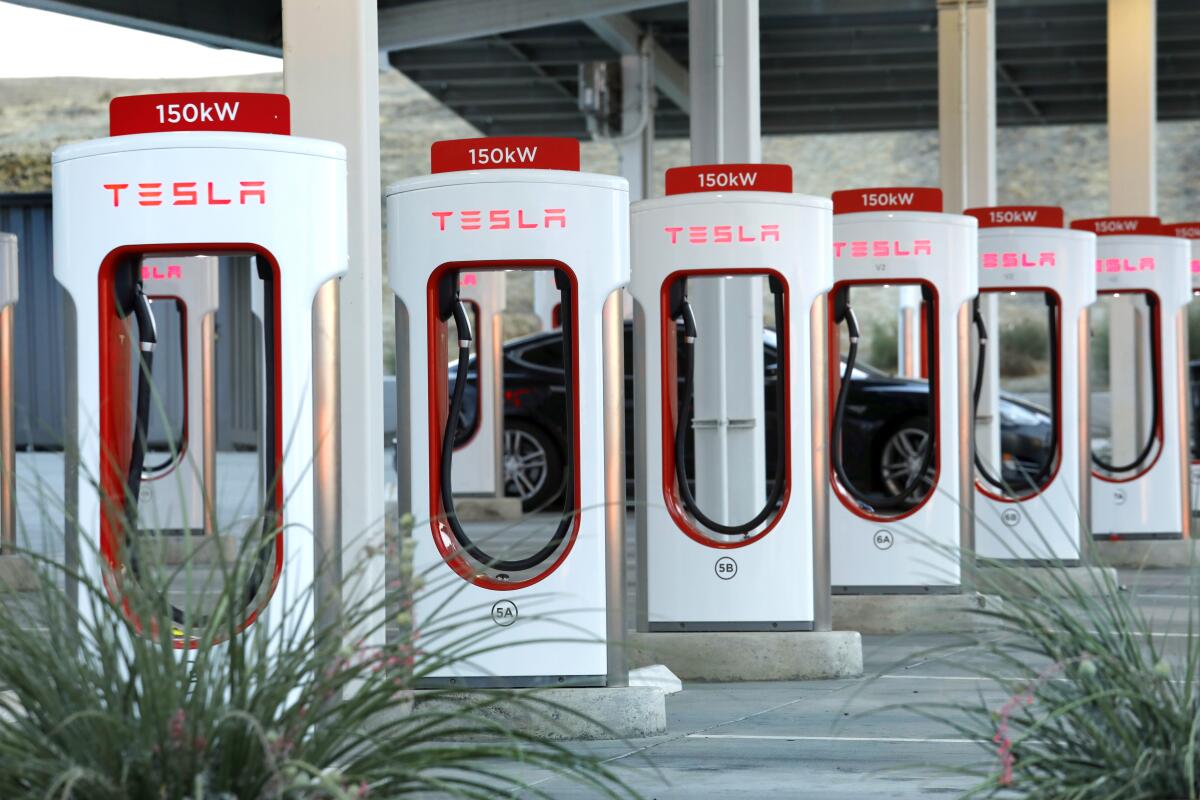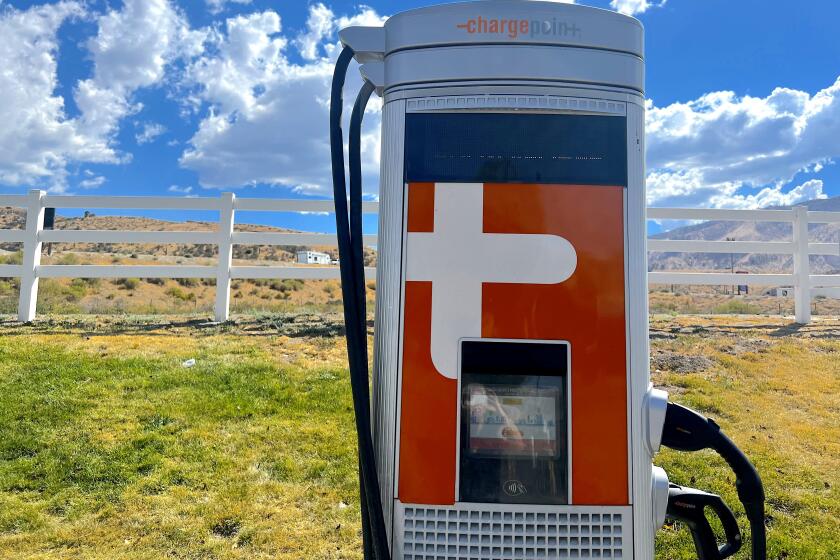U.S. government will pay Tesla to open its charger network to non-Tesla EVs

- Share via
Tesla has agreed to open up its charging network to non-Tesla electric vehicles after the U.S. government said it would foot the bill.
Elon Musk, Tesla’s chief executive, promised to provide 7,500 open-access chargers in the U.S. by the end of 2024, according to Biden administration officials. Taxpayer dollars will pay for the conversion of existing Tesla chargers or the construction of new ones to accommodate cars built by Ford, GM, Hyundai, Kia, Volvo, Volkswagen and other electric car makers.
A trip from the Bay Area to Southern California highlights the miserable state of the charging network available to many electric vehicle drivers.
The Tesla deal is part of the Biden administration’s $7.5-billion plan to fund 500,000 EV chargers throughout the U.S., mostly along major highways at 50-mile intervals. The spending was approved by Congress in 2021. Further details were announced Wednesday morning. Tesla’s share of that pie was not disclosed.
Tesla’s proprietary Supercharger network is by far the world’s largest and most reliable, and is considered a key competitive advantage for the automaker. By opening its network to outsiders, however, Tesla is positioned to boost its charging revenue and profit margins. (The company had said it would charge higher prices for non-Tesla charging if and when it opened the network.)
Currently, Tesla provides 28,000 charging ports at Supercharger stations in the U.S. and 40,000 worldwide.
There are two common standards for electric vehicle charging in the U.S. — Tesla’s and everyone else’s. The main reason for incompatibility is the nature of the charger plug that fits into an electric car’s charging port. The industry standard is known as CCS, larger than Tesla’s version with a different plug-end configuration. Exactly how Tesla will equip its Superchargers for open access hasn’t been detailed.
Less than two months after touting a plan to put driverless taxis on the road, Tesla Chief Executive Elon Musk on Tuesday walked back the ambitious timetable.
The $7.5 billion will be spread among charger manufacturers, other automakers, retail chains, land developers and others who qualify for public charger subsidies. Until the administration’s announcement Wednesday morning, it was an open question whether Tesla would qualify for any of the funds. Separately, Tesla might qualify for charger subsidies from state programs in California.
Whether or not Musk will meet his 2024 commitment is another matter. Musk has a long and growing record of unfulfilled promises, blown deadlines and reneged deals. They include his prediction that Tesla would by now be operating a network of a million driverless robotaxis, his announcement that the company would have a pickup truck on the market in 2021 and his attempt to back out of buying Twitter.
A White House spokesman said no contracts with Tesla have been signed yet. The administration has at times had a tetchy relationship with the company after excluding it from an event held to promote EVs.
Also unclear: the price non-Tesla customers will have to pay to buy electricity from a Supercharger. Tesla has been experimenting with open-access chargers in a dozen countries in Europe and in Australia, where non-Tesla customers pay a higher price.
More to Read
Inside the business of entertainment
The Wide Shot brings you news, analysis and insights on everything from streaming wars to production — and what it all means for the future.
You may occasionally receive promotional content from the Los Angeles Times.












